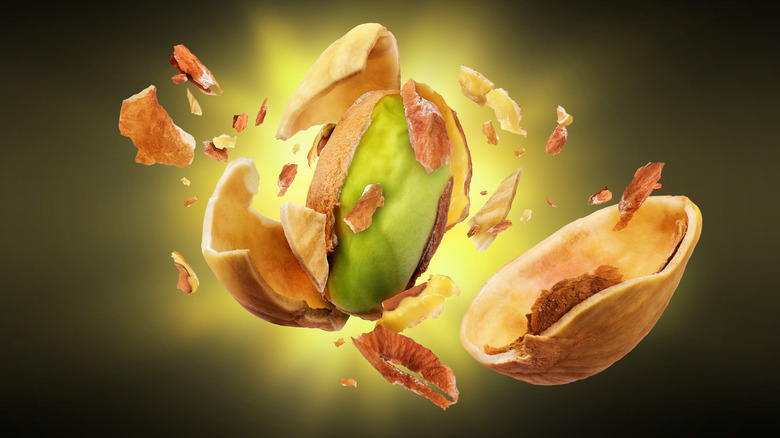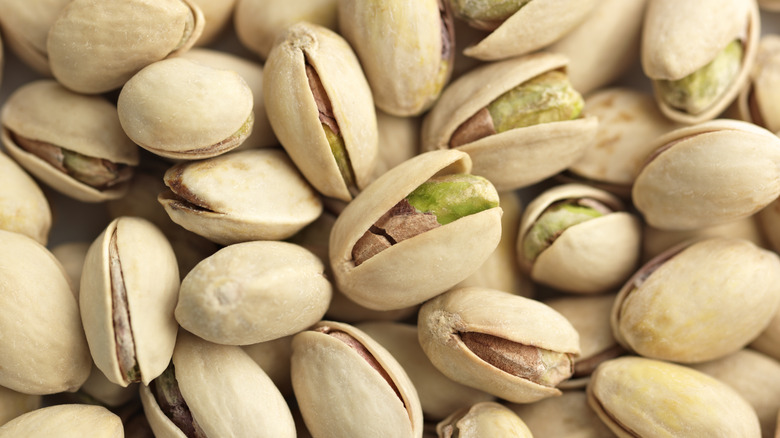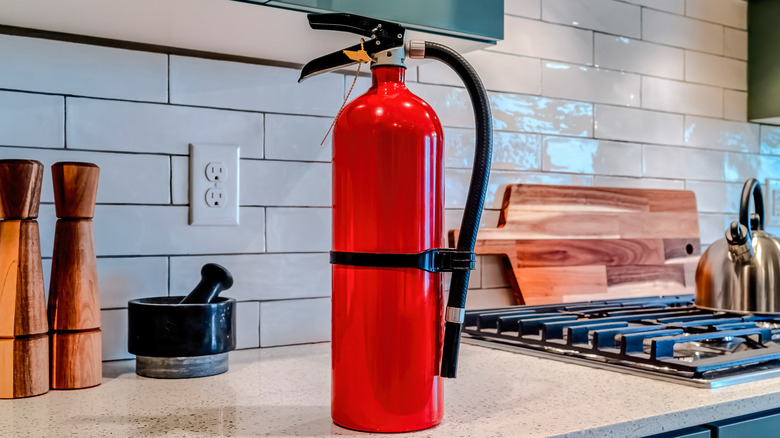Do Pistachios Actually Randomly Explode?
Cracked from the clutches of stubborn shells or devoured by the handful, pistachios reign supreme as the snack of choice for many nut aficionados. From pistachio ice cream to pistachio pesto, the nutty flavor and crunchy (yet somehow still chewy!) consistency of this seed elevates a number of dishes. While most often found in a shopping cart or pantry, this little green morsel recently found itself in the news for an alarming claim.
Pistachios — yes, those tiny kernels of roasted goodness — can allegedly spontaneously combust. That's right — sweet, innocent, pistachios, accused of bursting into flames. While it might be hard to imagine your favorite nut igniting mid-snack, it turns out that pistachio combustion is possible. Under the right conditions, pistachios can even explode. But, it's not necessarily in the way you might imagine. So before you rid your pantry of these salty delights, let's take a look at the explosive facts.
Pistachio's potential for combustion
The potential for pistachio combustion is based on two factors: fat and water content. Pistachios are made up of 45% fat and contain a small amount of fresh water. As detailed by the Transportation Information Service (TIS), water exposure breaks down fat into fatty acids through a process called hydrolytic fat cleavage. A byproduct of this process? Heat. Because fats are so flammable, self-heating creates an environment where combustion could occur. Under the right conditions, the TIS notes, "fresh pistachio nuts with a high water content tend in particular towards rapid self-heating and may also ignite." The hydrolytic cleavage process is vigorous, and can occur "within just a few hours." In these conditions, a pile of pistachios can burst into flames.
So, what's to stop your afternoon snack from igniting? The TIS oversees maritime cargo transportation and is primarily concerned with the storage and handling of large shipments of pistachios. Specifically, the TIS notes that flammable conditions are primarily created by "excessive stack pressure" when pistachios are transported by ship. So, the combustion risk is really only present when pistachios are stored in bulk while confined to tight quarters. So unless you're hoarding large amounts of highly pressured pistachios in your pantry, your house shouldn't be going up in smoke any time soon.
Other edible fire hazards
While your kitchen is pretty safe from the spontaneous combustion of foods, it's likely housing several ingredients that could pose a fire hazard. According to the Utah State Fire Marshal, flour and sugar are both very flammable, and exposure to a flame and air could trigger an explosion. The same is true of non-dairy creamers, which are often powdered as well.
Besides powders, oils can easily catch fire. Standard cooking oils (like peanut and soybean oil) release flammable vapors once they reach their flashpoint, which is around 600 degrees Fahrenheit. The marshal cautions that oil should be immediately removed from heat when it begins smoking. Similarly, alcohol-based sauces like cooking wine can release flammable vapors at high heat.
According to the National Fire Prevention Association, two-thirds of all cooking-related fires can be attributed to foods or other cooking components that caught on fire. It recommends every home own a "multi-purpose extinguisher (can be used on all types of home fires) that is large enough to put out a small fire, but not so heavy as to be difficult to handle."


